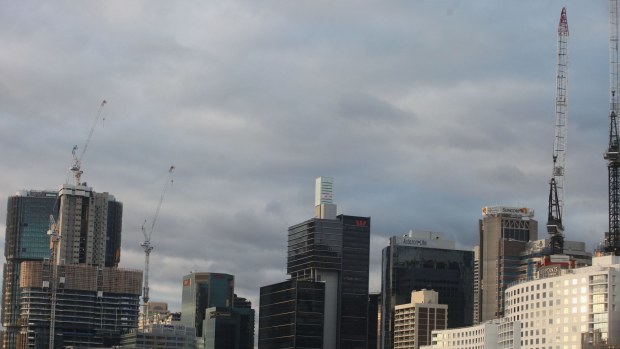Sydney office tenants surge but with an eye on the new supply

Sydney's economic growth, and business expansion, has driven a surge in office take-up, and a drop in the office vacancy, not just in the CBD but in a number of metropolitan office precincts.
The question now is whether the surge in demand is strong enough to fill the new round of office completions - particularly Barangaroo - and the space the new tenants are leaving behind, without another weakening in rents and rise in incentives.
In the six months to July, the Sydney CBD vacancy rate dropped to 6.3 per cent, according to the Property Council. Its the lowest CBD rate in the country, and follows a high 60,000 sq m of space taken up, double the historic average.

Sydney office vacancies are the lowest in Australia. Fiona Morris
Across the metropolitan area, the office vacancy rate fell in North Ryde, Chatswood and North Sydney. All three, along with Parramatta, now have some of the lowest vacancy rates in the country.
"Its looking very healthy," said Property Council chief executive Ken Morrison.
Leasing specialist positive
JLL's head of office leading in NSW, Daniel Kernaghan, said the strength of the residential market and investment in infrastructure was beginning to have a positive impact on NSW office leasing.
"Mid to large sized businesses are becoming aware that Sydney's development pipeline drops off sharply at the end of 2016 with very limited completions expected over 2017 and 2018," he said.
"As incentives move ahead of market conditions, we expect to see incentives trending below 25 per cent in 2016."

CBRE's head of research, Australia, Stephen McNabb, said Sydney would have a below average vacancy for the next two to three years, despite emerging supply and that would support some rent growth and a stabilisation in rent levels.
However CBRE's senior director, office services, Jenine Cranston, noted that while inquiry levels and demand remained at positive levels, there were close to 200 options for tenants needing 800 to 2500 sq m with little change to deal terms in the short term.
Geoffrey Learmonth, a director of national tenant representatives LPC Australia, warned that while the take-up was good news for today, the CBD's vacancy would rise again as the new developments came on stream and their tenants left space behind.
Mr Learmonth said tenants about to move into new buildings, including the NSW Government, Westpac, Ashurst and Ernst & Yong, were leaving behind 278,000 sq m of so far unleased space.
At the same time, 185,000 sq m is still to lease in the new towers, even though nearly 60 per cent of the space has been pre-committed.
Still a lot of space to be leased
On those numbers, the CBD will 462,000 sq m of space to absorb over the next five years - equal to over 230 larger floors - with the biggest shock, 171,000 sq m becoming available next year.
"The space will take over seven years to absorb at Sydney's long term take-up rate," Mr Learmonth said.
Kevin George, executive general manager, office and industrial, at the DEXUS Property Group, and one of the city's leading property owners, said that the figures did not account for an estimated 281,000 sq m of space that would be withdrawn from the market for reworking or conversion to apartments.
"Even with the stock coming in, we see the vacancy capping out around 10 per cent before it tracks down to 6-6.5 per cent in 2018," he said though he warned that incentives would stay "sticky".
"You typically seen three or four years of growth with the banks, the wealth management firms and the education sector taking more space."
Chief economist at BIS-Gelber Frank Gelber said the demand was just coming off the bottom. "It used to be a mountain of office space to fill, now it is a molehill" he said.
Subscribe to gift this article
Gift 5 articles to anyone you choose each month when you subscribe.
Subscribe nowAlready a subscriber?
Latest In Commercial
Fetching latest articles